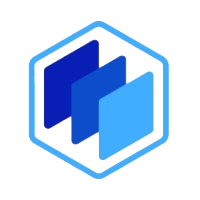Shopbox
Nominated Award:
Best Application of AI in a Startup
Website of Company (or Linkedin profile of Person):
https://www.shopbox.ai/

Shopbox is an AI-powered adaptive shopping experience platform. It transforms any generic online store into one that learns about each visitor. From their very first click, it constantly adapts in real-time throughout their entire shopping journey. By presenting relevant suggestions based on their interests and behaviour it provides a uniquely tailored shopping experience. It delivers for online retailers large and small, an Amazon-style personalised shopping experience, without the hefty price tag.
Even the largest online retailers such as Argos, Next, FNAC etc. have not been able to compete with Amazon in giving a hyper-personalised experience to their customers. While analysts attribute up to 35% of Amazon’s retail revenue to this approach, other retailers struggle to do any form of recommendations on their Home, Listing or Product Display Pages (PDPs). This huge disparity is what Shopbox addresses.
Shopbox is a completely new approach to engaging customers in online stores, with a proven sales conversion increase of up to 200% and basket size increase of up to 45%. How?
• It adapts the store to the customer with just 1 click on the site. See experience comparison video
https://share.vidyard.com/watch/9F1aDG1KGYuZqhX3vcCynP?
• It brings new ways of shopping to the consumer, such as the AI Shop Assistant, which increases the time people spend in the store by up to 400%
• It addresses key e-commerce issues such as reducing out of stocks and promoting long tail products (instead of discounting them and impacting retailers’ margin)
• It needs just a few minutes work from the retailer. Implementation start to finish is usually less than 3 days, has zero ongoing maintenance effort and provides uplift straight away
Our mission is to help online retailers to have an Amazon-style shopping experience without the price tag. We are obsessed with removing barriers to entry, and this enables retailers to get a return before there are any costs to them.
There is no setup / project costs. We have refined our solution and implementations to a point where we don’t charge a client upfront for Shopbox. Retailers don’t need a capital budget to cover a pool of development hours and don’t need to involve IT resources for deployment.
Customers only pay when Shopbox is live on their website and contributing to increased conversion and average order values. This happens immediately as the platform learns and functions based on real-time shopper behaviour, not following a lengthy data gathering and analysis phase.
In less than 2 years trading Shopbox AI added over 40 retailers, powering over 55 estores. Brands such as Schuh, Easons, Toolstation, Kitlocker.com and TileStyle have put their trust in us to enhance their online offering.
Reason for Nomination:
Through ongoing discussions with retailers, we uncovered some common issues with existing e-commerce recommender systems, namely:
•Expensive and time consuming implementations,
•Large amounts of manual works to implemented and maintain,
•Difficulty in scaling to large product catalogues,
•Lacking ability to provide quality recommendations with little data.
The core AI technology developed by Shopox is a number of recommender systems. We are constantly refining them and adding new features as we receive feedback. We have primarily developed hybrid recommender systems, which can utilise user interaction and product data. These systems are capable of:
•Providing high quality product recommendations,
•Providing context specific recommendations depending on the user’s history and the current page they are viewing,
•Being tolerant of noisy and missing data,
•Responding quickly to changes in product and behavioural data,
•Being flexible enough to accommodate a variety of ecommerce platforms,
•Operating across any retail domain,
•Accommodating specific recommendation constraints for example based on brands or stock levels,
•Scaling effectively as new retailers are onboarded.
We offer product recommendations in a number of ways depending on the user’s context. One form of recommendations are provided using the current product being viewed. These are recommendations based on “similar products” and “frequently bought with this product”. Another system recommends products based on a user’s viewing activity. We also provide Amazon style homepage grids which recommend products based on many criteria including a user’s viewing history, trending products and top ordered products. To create the product recommendations we use product data, order data and user interaction data. Recommendations are formed by first constructing a series of similarity matrices based on specific fields in the data. For example, product descriptions are cleaned, tokenized, and vectorized, after which a similarity metric is applied to create a product by product similarity matrix.
Another example of a similarity matrix we produce uses domain specific taxonomies to identify keywords which are important to particular domains. When two products use the same taxonomic phrases they will score higher in that taxonomic similarity matrix. The similarity matrices are combined in a weighted way to produce an overall similarity matrix. We then perform a ranking on a per product basis and write the resulting product matches to a data store. The manner in which matrices are weighted enables high levels of flexibility in adapting to the volume and quality of a customer’s data. If a customer does not have high quality product category data, but has high quality description data, we can weight the description such that it has higher importance. Furthermore, this system enables us to easily incorporate new NLP techniques. If we identified a suitable transformer model to create document embeddings, we could construct a similarity matrix and combine this with the existing ones. We experimented with many different approaches before settling on this current configuration, which has proven to provide high quality recommendations in a flexible and scalable way.
The main programming language used is Python. For data preprocessing and cleaning we use beautifulsoup and NLTK. Matrices are built and manipulated using scipy and numpy. Many of the operations performed with these libraries can take advantage of highly optimised code.
The model creation process runs at least once per day per customer. Our ETL processes and recommender models are deployed using Google Cloud to spin up virtual machines which run Docker containers. Docker images are built every time we push to the Git repository. This setup of continuous integration and continuous delivery, enables reliable and rapid development.
Product data is stored in an SQL database, while user interaction data is stored in BigQuery. BigQuery can query high volumes of data exceptionally fast, which is ideal for the large volume of user interaction data.
Some of the main challenges originated from the ETL (Extract Transform Load) process which had to accommodate a wide variety of data formats and qualities. This involved creating a standard extraction procedure, which is extended if required for clients. Another issue we encountered was that the similarity matrices can become very large, and initially some virtual machines ran out of memory. We solved this by performing batch computations of portions of the similarity matrices and writing out recommendations to a datastore as they become available. Our modelling system has scaled to operate with product catalogues sizes greater than 200,000 items, which gives us a competitive advantage.
Our system enables fast and accurate model development, producing high quality recommendations from the moment we go live with a customer. For e-commerce platforms with consistent data feeds, we can complete data ingestion and model development in approximately an hour. This sharply contrasts our competitors who can take months to complete software implementations for recommender systems. As more data is gathered through user interactions, our recommendations become better, and these are automatically applied during the daily model building processes. The modelling system has scaled well, enabling the rebuilding of 55 models per day.
In the following, we are referring to Shopbox users as those people who use our recommendations, and non-Shopbox users as people who do not use our recommendations. To date we have seen success across many metrics including:
•Sales Conversion – We see a 100% to 200% increase in conversion for Shopbox over non Shopbox users.
•Average Order Value – We see a 10% to 45% increase in order values with Shopbox users.
•Repeat buyers and returning users – Shopbox users represent an increase of 20% in repeat buyers.
•More time spent on site – Shopbox users spend on average 400% longer on clients’ websites.
•Reduced bounce rate – For one large customer, Shopbox users had a 17% bounce rate, while non-Shopbox had 57%
In summary, Shopbox is helping retailers’ to be competitive with large ecommerce giants. Our competitive advantages are: speed of implementation, quality of recommendations both from the point of going live and over time, and our capacity to handle large volumes of product and customer data. We enable a more engaging customer experience, facilitating a more effective search of a retailer’s product space.
Additional Information:
Shopbox can provide recommendations with low volumes of data, and for customers with both large and small product catalogues. Smaller retailers will often have a smaller volume of user interaction and order data than larger ones. Our recommender systems adapt to this, and utilise the full breadth of available data, combining different sources intelligently.
Many other recommendation approaches will focus on one source of data such as the description, and often use a less informative preprocessing and similarity metric. One key challenge that we overcame is how to scale our approach which produces richer recommendations. This was achieved through batching the computations, only updating product matches as needed and utilising optimised python functions.
Another factor which separates us from competition is the ease with which retailers can integrate our product into their platform. It simply requires giving us credentials to fetch their product feed, and adding a single line of code into relevant webpages to load our script and enable our AI assistant on their website.
In the uploaded files, Figure 1 shows the shop assistant operating on a mobile device showing similar products, as well as new and products on promotion based on what the customer is currently viewing. Our software system can start offering tailored recommendations from the very first click a user makes on a site by identifying recommendations based on their immediate and historical viewing. Figure 2 shows the homepage that users see when they first visit the site, and also the curated version, which will be customised as they browse the site.
Useful links:
Some of recommendations can be viewed at:
• https://www.schuh.co.uk/
• https://tilestyle.ie/
• https://www.kitlocker.com/
• https://euronics.ie/
• https://tonykealys.com/
Customer testimonials:
•https://www.shopbox.ai/casestudies/the-company-teachers-trust-gets-a-helping-hand-from-shopbox/
•https://www.shopbox.ai/casestudies/shopbox-ai-transforms-the-shopping-experience-for-craft-butcher-kerrigans-boosting-conversions-by-250/
•https://www.shopbox.ai/casestudies/taking-the-online-shopping-experience-
to-the-next-level/
Files:
https://aiawards.ie/wp-content/uploads/ninja-forms/4/Figure_1_Shop_Assistant_on_Kerrigans.png
https://aiawards.ie/wp-content/uploads/ninja-forms/4/Figure_2_Curated_Homepage_on_Kitlocker.png
